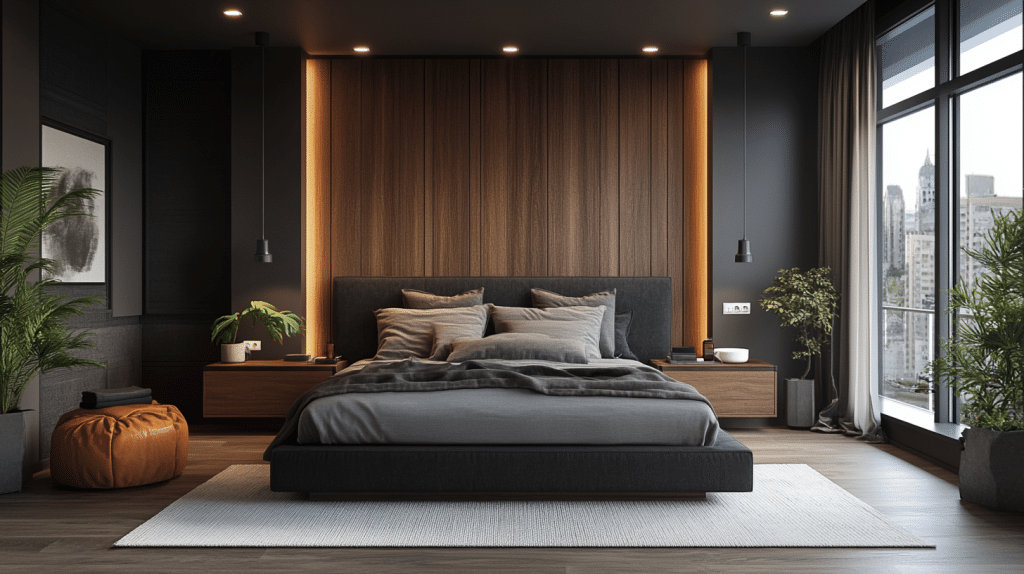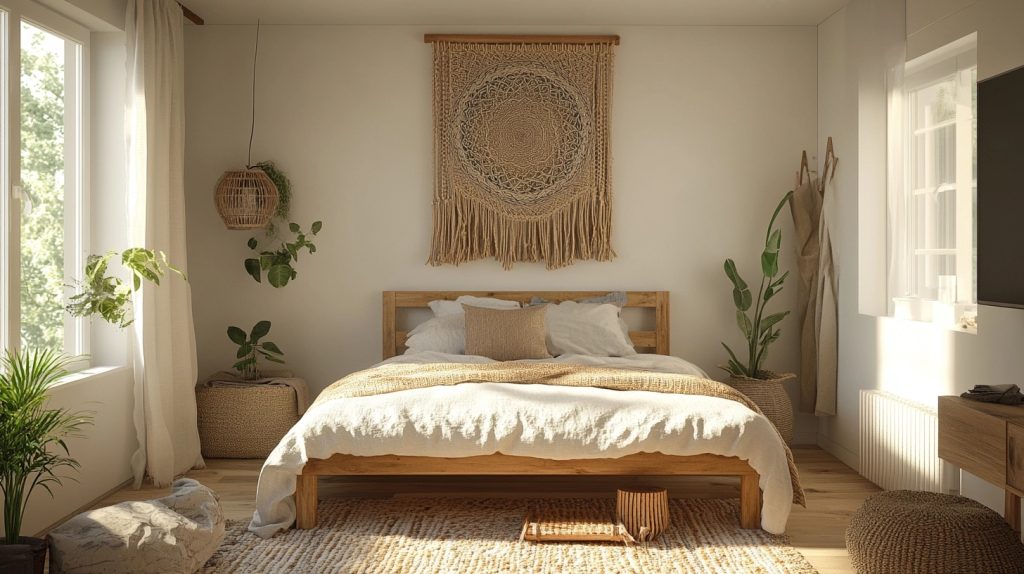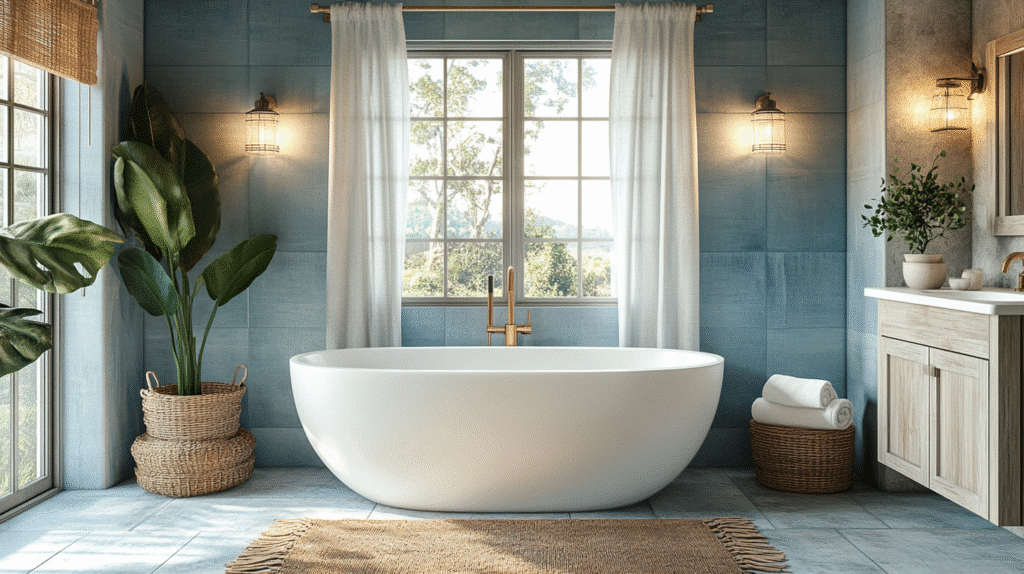Is your home feeling a bit cluttered and chaotic? What if the secret to a more peaceful and stylish living space lies in adopting a minimalistic interior design? If you’re ready to embrace simplicity and create a clean, modern look, you’ve come to the right place. In this article, we’ll explore 29 minimalistic interior design ideas for a clean look. From smart storage solutions to sleek decor tips, these ideas will help you transform your home into a serene and inviting haven. Ready to discover the magic of minimalism? Let’s dive in!
1. The Art of Space

The Art of Space focuses on the fundamentals of minimalistic interior design by maximizing the use of open areas and emphasizing the beauty of unoccupied space. This approach allows each piece of furniture and decor to stand out as individual works of art. Simple lines and functional design reduce visual clutter, enhancing the overall sense of calm. This style is perfect for those who appreciate the aesthetic where less is truly more.
2. Understated Elegance

Understated Elegance in minimalistic interior design showcases how minimalism can be both luxurious and refined. By choosing high-quality materials and subtle color palettes, this style emphasizes sophistication without opulence. Furniture with sleek lines and minimal detailing reinforces the theme of simplicity, ensuring that the space feels both upscale and inviting. This style is ideal for those seeking a refined atmosphere in their living spaces.
3. Sanctuary of Simplicity

Sanctuary of Simplicity embodies the principles of minimalistic interior design to create a peaceful and orderly environment. This design uses minimal furnishings and neutral colors to promote a sense of tranquility and space. The strategic use of texture and natural materials can add warmth and comfort without compromising the minimalist ethos. This approach is particularly effective in creating serene bedrooms and living areas.
4. Scandinavian Serenity

Scandinavian Serenity merges the clean lines and functional beauty of Scandinavian design with the principles of minimalistic interior design. This style features light woods, soft whites, and cozy fabrics that together create a light, airy, and homely atmosphere. The inclusion of plants and natural elements plays into the theme of Japandi living, providing a subtle connection to the outdoors. This style is perfect for those who value functionality and minimalism in their home decor.
5. Monochrome Magic

Monochrome Magic in minimalistic interior design utilizes a black and white color scheme to create striking contrasts that are both bold and simple. This approach allows for dramatic statements through structure and form rather than through clutter or excess decor. The result is a chic and timeless look that works well in any space, especially in modern living rooms and kitchens.
6. EcoZen Spaces

EcoZen Spaces combine the principles of eco-friendly design with minimalistic aesthetics, focusing on sustainability without sacrificing style. Materials are chosen for their low environmental impact and natural beauty, supporting a clean and green living environment. This style integrates elements of Japandi interiors, which emphasize harmony with nature through minimalistic yet warm designs. Perfect for those who want their homes to reflect their eco-conscious values.
7. Urban Oasis

Urban Oasis in minimalistic interior design creates a peaceful retreat amidst the hustle and bustle of city life. By using minimalist principles, spaces are transformed into tranquil havens with room to breathe. The design often incorporates elements of Japandi living room styles, blending Japanese minimalism with Scandinavian functionality. This style is ideal for urban dwellers looking to bring simplicity and calm into their homes.
8. Sleek Retreats

Sleek Retreats focus on creating clean, open spaces that exude a sense of luxury and calm. The minimalistic design is characterized by its use of sleek, contemporary furniture and a restrained color palette that together create a sophisticated ambiance. These spaces often serve as personal sanctuaries where clarity and simplicity allow for relaxation and rejuvenation. Perfect for modern interiors that prioritize both style and substance.
9. Bare Necessities

Bare Necessities in minimalistic interior design strip the space down to the essentials, eliminating all non-essential items and focusing on the functionality of each piece. This style emphasizes the beauty of simplicity and space, often incorporating elements of Japandi design to blend minimalism with natural warmth. The result is a living space that feels open, clean, and uncluttered.
10. Whispers of White

Whispers of White showcases minimalistic interior design through the use of various shades of white and light neutrals, creating a soft, serene atmosphere. This approach allows light to bounce around the room, making spaces appear larger and more open. Subtle textures and minimal details keep the decor interesting yet understated. This style is perfect for those who prefer a subtle yet impactful interior design.
11. Minimalistic Maximalism

Minimalistic Maximalism combines bold, focused statements with the principles of minimalistic design to create spaces that are both impactful and uncluttered. This approach uses one or two standout pieces, like a bold art piece or a uniquely designed furniture item, as the focal point in a room that otherwise adheres to minimalist principles. This style is ideal for those who want to make a statement without excess.
12. Tranquil Transitions

Tranquil Transitions in minimalistic interior design focus on creating smooth, seamless flows between different areas of the home. By using consistent materials and colors, and minimizing sudden design changes, these spaces promote a sense of calm continuity. This style often incorporates elements of Japandi interiors, where simplicity and functionality lead to peaceful living environments.
13. Calm, Cool, Collected

Calm, Cool, Collected designs are all about creating a minimalistic interior that exudes tranquility and order. This style uses muted colors, streamlined furniture, and a tidy layout to keep the atmosphere serene and composed. The minimalist approach ensures that each item in the room has a purpose and a place, reducing clutter and enhancing calm. Perfect for those seeking a Zen-like environment in their home.
14. Silent Spaces

Silent Spaces in minimalistic interior design emphasize the absence of noise and clutter, creating environments that are perfect for reflection and relaxation. The design focuses on minimal furnishings, muted colors, and plenty of open space, allowing the mind to rest and rejuvenate. These spaces often incorporate elements of Japandi living, where the simplicity of the decor contributes to a peaceful atmosphere.
15. Soft Touch

Soft Touch brings a gentler side to minimalistic interior design by incorporating plush textiles, soft curves, and warm colors. This approach maintains a minimalist aesthetic while making spaces feel cozy and inviting. It’s ideal for living areas and bedrooms where comfort is key but clutter is non-existent.
16. Clear Conscience

Clear Conscience focuses on sustainable practices in minimalistic interior design, using eco-friendly materials and reducing waste. This style aligns with modern environmental concerns while maintaining a sleek, minimalist aesthetic. Furniture is often multi-functional, and decor is kept to a minimum to emphasize sustainability without sacrificing style.
17. Pure Harmony

Pure Harmony in minimalistic interior design seeks to create a balanced and aesthetically pleasing environment by using symmetrical layouts and harmonious color schemes. The minimalist approach is enhanced by the careful selection of each item to ensure that the space feels ordered and tranquil. This style often incorporates Japandi elements, blending Scandinavian functionality with Japanese minimalism.
18. Streamline Your Life

Streamline Your Life with minimalistic interior design by focusing on efficiency and simplicity. This style uses smart storage solutions and straightforward decor to minimize clutter and maximize usability. It’s particularly effective in kitchens and home offices, where functionality is essential.
19. Minimalistic Manifesto

Minimalistic Manifesto emphasizes the philosophy behind minimalistic interior design, advocating for less clutter, more space, and a focus on the essentials. This style is about making deliberate design choices that align with a minimalist lifestyle, using a limited color palette and functional furniture.
20. Blank Canvas

Blank Canvas in minimalistic interior design treats each room as a clean slate, emphasizing open space and minimal decor. This approach allows the natural architecture of the space to stand out, enhanced by subtle touches of decor like a single piece of artwork or a strategically placed vase.
21. Zen Minimalistic

Zen Minimalistic design focuses on creating a calm, meditative environment in the home. It combines the simplicity of minimalistic design with the tranquility of Zen aesthetics, using elements like natural wood, soft lighting, and uncluttered spaces. This style is ideal for creating a peaceful retreat in your own home.
22. Bare Beauty

Bare Beauty in minimalistic interior design celebrates the beauty of simplicity. This style uses minimal furnishings and keeps decor to a minimum, allowing the quality of the materials and the elegance of the design to shine through. It’s perfect for those who appreciate understated beauty and a clear, uncluttered space.
23. Light and Shadow

Light and Shadow in minimalistic interior design explores the interplay between natural light and the architectural elements of a space. This style uses large windows, strategically placed mirrors, and minimal obstructions to maximize light and create interesting shadow patterns throughout the day. It’s an ideal choice for those interested in the dynamic aspects of minimalist living.
24. Elemental Minimalistic

Elemental Minimalistic design focuses on bringing the four elements—earth, water, air, and fire—into the home in a subtle and minimalist way. This might involve using water features, natural stone, airy spaces, and fireplaces in a design that remains clean and simple. This approach helps to create a living space that feels connected to the natural world.
25. Family-Friendly Minimalistic

Family-Friendly Minimalistic interior design proves that minimalism can be practical for households with children. This style incorporates durable materials, easy-to-clean surfaces, and ample storage solutions into a minimalist aesthetic. It’s designed to be functional yet stylish, accommodating the needs of a busy family without excess clutter.
26. Architectural Asceticism

Architectural Asceticism in minimalistic interior design emphasizes the architectural lines and spaces of a building. This style is about appreciating the form of the structure itself, with minimal interior decorations to distract from the design of the building. It’s perfect for those who have a keen interest in architecture and prefer a very restrained approach to decor.
27. Cultural Minimalistic

Cultural Minimalistic interior design incorporates elements from various cultures in a minimalist way. This could involve subtle influences like color schemes inspired by specific regions, artwork, or artisanal pieces that add character without clutter. This style is ideal for those who appreciate global aesthetics but prefer a minimalist environment.
28. Technology and Tranquility

Technology and Tranquility in minimalistic interior design shows how modern technology can be integrated into minimalist decor without disrupting the serene aesthetic. Smart home technology, hidden wires, and minimalist tech setups ensure functionality without visual clutter. This style is perfect for tech enthusiasts who value a clean, streamlined living space.
29. Outside In

Outside In focuses on incorporating outdoor elements into minimalistic interior design. This could mean using large windows to bring in views of nature, incorporating indoor plants, or using materials like stone and wood that reflect the outdoors. The design remains minimalist, with each element carefully chosen to strengthen the connection to the external environment.
Conclusion
Achieving a clean and stylish home is within your reach with these 29 minimalistic interior design ideas. By incorporating smart storage solutions, sleek furniture, and thoughtful decor, you can transform your space into a sanctuary of simplicity and elegance. Embrace the minimalist approach and enjoy a home that feels both fresh and inviting. Happy decorating, and may your new minimalist design bring clarity and calm to your living space!






